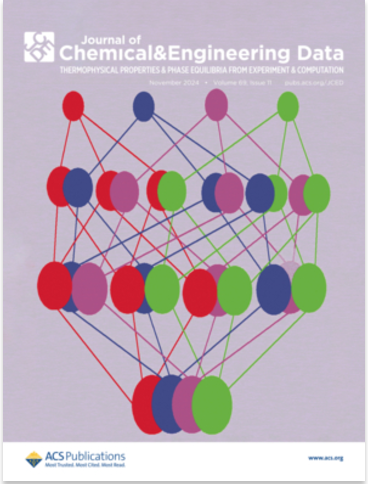通过远程医疗向晚期肺癌患者提供早期姑息治疗与亲自治疗的比较效果试验。
IF 2.1
3区 工程技术
Q3 CHEMISTRY, MULTIDISCIPLINARY
引用次数: 0
摘要
LBA3 背景:国家指南建议对晚期癌症患者及早整合姑息治疗和肿瘤治疗,因为有可靠的证据表明,这种治疗模式可提高患者的生活质量(QOL)和其他重要疗效。然而,由于就医途径和资源有限,大多数患者无法在门诊接受早期姑息治疗(EPC)。为了克服这些障碍,我们在晚期非小细胞肺癌(NSCLC)患者及其护理者中开展了一项大规模的比较试验,研究通过安全视频提供 EPC 与亲自提供 EPC 的效果。方法:在 2018 年 6 月 14 日至 2023 年 4 月 5 日期间,我们在美国 22 个癌症中心招募了 1250 名在过去 12 周内确诊的晚期 NSCLC 患者,参加远程医疗与面对面 EPC 的随机试验。患者被随机分配到通过视频或在门诊与姑息治疗临床医生进行每四周一次的会面。参与者在基线以及第12周和第24周完成自我报告测量。主要目的是评估远程医疗与面对面 EPC 在第 24 周时对 QOL 影响的等效性,采用回归建模法,以肺癌治疗功能评估(FACT-L,范围 = 0-136)的等效性为 ±4 分。我们还比较了各组间护理人员参与 EPC 访问的比率、患者报告的抑郁和焦虑症状(患者健康问卷-9;医院焦虑和抑郁量表)、应对能力(简明 COPE)以及对预后的看法(对治疗和预后的看法问卷)。研究招募在 COVID-19 大流行开始时停止了两个月。研究结果参与者(平均年龄 = 65.5 岁;54.0% 为女性;82.1% 为白人)在第 24 周时,远程医疗组和面对面医疗组的姑息关怀就诊次数平均分别为 4.75 次和 4.92 次。由于大流行,面对面组有 3.9% 的就诊是通过视频进行的。第 24 周时,被分配到远程保健组的患者的 QOL 评分与接受面对面 EPC 的患者相当(调整后的平均值:99.67 对 97.67,P < 0.043 表示相当)。远程保健组与面对面组相比,护理人员参与 EPC 访问的比例较低(36.6% 对 49.7%,p < 0.0001)。研究组在抑郁和焦虑症状、应对技巧的使用、对治疗目标的看法以及癌症的可治愈性方面没有差异。研究结论在晚期 NSCLC 患者中,通过视频提供 EPC 与面对面提供 EPC 对 QOL 的影响相当。在一系列患者报告的结果中,这两种方式也没有差异,尽管护理人员参加面诊的人数多于视频面诊。这些研究结果突出表明,通过远程医疗服务,这种循证治疗模式具有极大的推广潜力。临床试验信息:NCT03375489 。本文章由计算机程序翻译,如有差异,请以英文原文为准。
Comparative effectiveness trial of early palliative care delivered via telehealth versus in person among patients with advanced lung cancer.
LBA3 Background: National guidelines recommend the early integration of palliative and oncology care for patients with advanced cancer, given robust evidence showing that this care model improves quality of life (QOL) and other important outcomes. However, most patients do not receive early palliative care (EPC) in the outpatient setting due to limited access and resources. To overcome these barriers, we conducted a large-scale comparative effectiveness trial of EPC delivered via secure video versus in person among patients with advanced non-small cell lung cancer (NSCLC) and their caregivers. Methods: Between 6/14/2018 and 5/4/2023, we enrolled 1250 patients with advanced NSCLC, diagnosed in the past 12 weeks, into a randomized trial of telehealth versus in-person EPC across 22 cancer centers in the US. Patients were randomly assigned to meet with a palliative care clinician every four weeks from enrollment through the course of disease either via video or in the outpatient clinic. Participants completed self-report measures at baseline and weeks 12 and 24. The primary aim was to evaluate the equivalence of the effect of telehealth versus in-person EPC on QOL at week 24, using regression modeling with an equivalence margin of ±4 points on the Functional Assessment of Cancer Therapy-Lung (FACT-L, range = 0-136). We also compared rates of caregiver participation in EPC visits and patient-reported depression and anxiety symptoms (Patient Health Questionnaire-9; Hospital Anxiety and Depression Scale), coping (Brief COPE), and perceptions of prognosis (Perceptions of Treatment and Prognosis Questionnaire) between groups. Study recruitment ceased for two months at the onset of the COVID-19 pandemic. Results: Participants (mean age = 65.5 years; 54.0% female; 82.1% White) had a mean of 4.75 and 4.92 palliative care encounters by week 24 in the telehealth and in-person groups, respectively. Due to the pandemic, the in-person group had 3.9% of visits occur via video. QOL scores at week 24 for patients assigned to the telehealth group were equivalent to those receiving in-person EPC (adjusted means: 99.67 versus 97.67, p < 0.043 for equivalence). The rate of caregiver participation in EPC visits was lower in the telehealth versus in-person group (36.6% versus 49.7%, p < 0.0001). Study groups did not differ in depression and anxiety symptoms, use of coping skills, or perceptions of the goal of treatment and curability of their cancer. Conclusions: The delivery of EPC via video versus in-person visits demonstrated equivalent effects on QOL in patients with advanced NSCLC. The two modalities also did not differ across a range of patient-reported outcomes, though caregivers attended more in-person versus video visits. The findings underscore the considerable potential for improving access to and broader dissemination of this evidence-based care model through telehealth delivery. Clinical trial information: NCT03375489 .
求助全文
通过发布文献求助,成功后即可免费获取论文全文。
去求助
来源期刊

Journal of Chemical & Engineering Data
工程技术-工程:化工
CiteScore
5.20
自引率
19.20%
发文量
324
审稿时长
2.2 months
期刊介绍:
The Journal of Chemical & Engineering Data is a monthly journal devoted to the publication of data obtained from both experiment and computation, which are viewed as complementary. It is the only American Chemical Society journal primarily concerned with articles containing data on the phase behavior and the physical, thermodynamic, and transport properties of well-defined materials, including complex mixtures of known compositions. While environmental and biological samples are of interest, their compositions must be known and reproducible. As a result, adsorption on natural product materials does not generally fit within the scope of Journal of Chemical & Engineering Data.
 求助内容:
求助内容: 应助结果提醒方式:
应助结果提醒方式:


